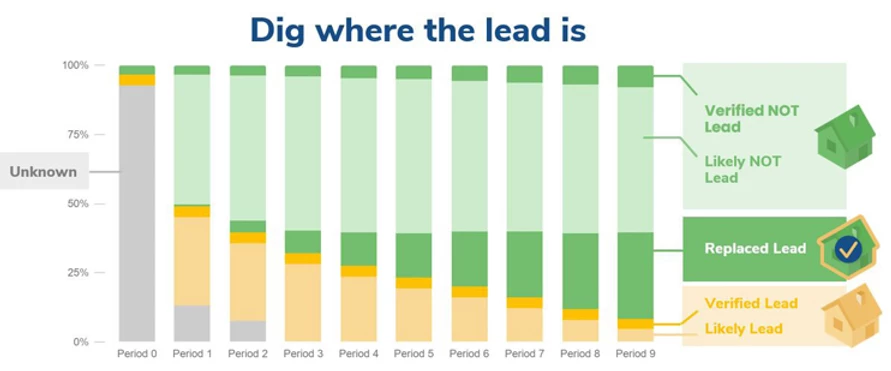How It Works
There’s a lot of uncertainty when it comes to inventorying service lines.
The BlueConduit platform applies sound statistical principles to characterize and reduce these uncertainties and guide water systems in their compliance and replacement programs.
This data-driven approach helps water systems accurately budget their replacement programs, as well as target their excavations at homes with highest probability of lead.
Step 1
The process begins with a rigorous review of existing service line and parcel data to generate estimates of the total number of lead service lines in the system.
- Verified service line material records
- Historical service line material records
- Codified water ordinances
- Real estate, parcel, or structure data
- Water test results
- Water main size and material data
- Fire hydrant locations and attributes
- Water billing information
- Census data
- More about the data sources we use
Yet, we know that water systems do not have complete information, and so the next step is assessing the accuracy of these data and conducting field inspections. The platform uses cutting edge statistical methods to target addresses that will reveal the most information to aid development of the model.
Step 2
The representative sample will combine with existing data to generate predictions about the likelihood of a lead service line at each address.
Step 3
Guided by predictions, the city can carry out digs and replacements, which then further updates the model with new information so that it can learn and improve its predictions.
Over time the plan is to replace the highest likelihood lead lines over time, and diminish the count of service lines with unknown materials or those predicted to be lead.

Are you Ready to Get Started?
Learn more about the timeline and process.
Let’s work together to get the lead out of the ground!


